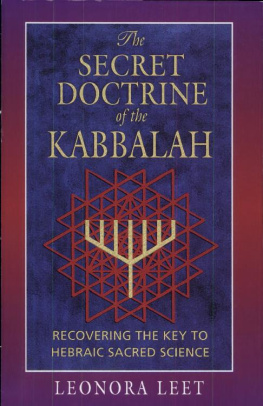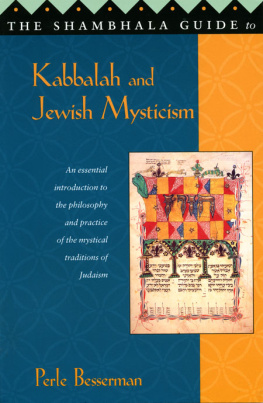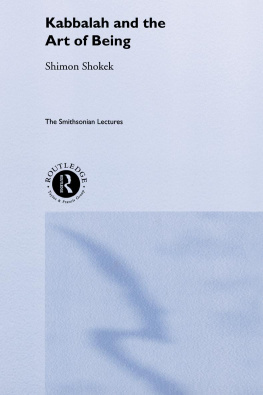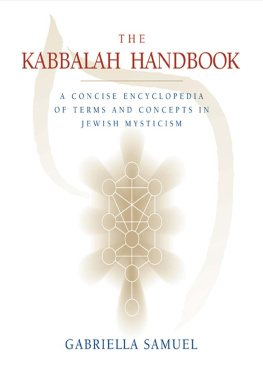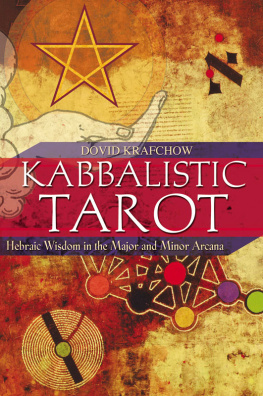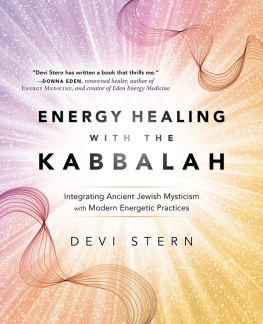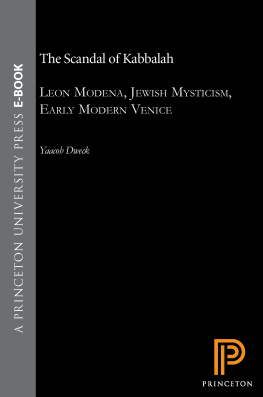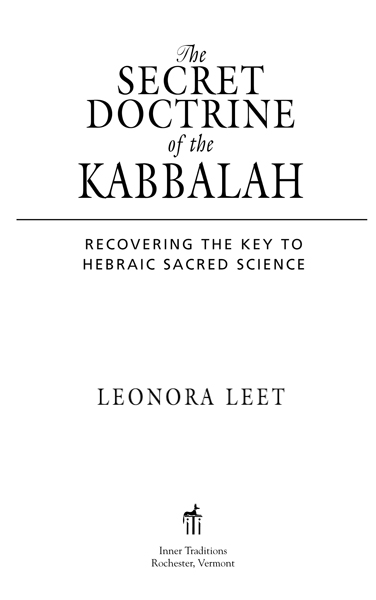
Inner Traditions International
One Park Street
Rochester, Vermont 05767
www.InnerTraditions.com
Copyright 1999 by Leonora Leet
All rights reserved. No part of this book may be reproduced or utilized in any form or by any means, electronic or mechanical, including photocopying, recording, or by any information storage and retrieval system, without permission in writing from the publisher.
Library of Congress Cataloging-in-Publication Data
Leet, Leonora.
The secret doctrine of the Kabbalah : recovering the key to Hebraic sacred science / Leonora Leet.
p. cm.
Includes bibliographical references and index.
ebook ISBN 978-1-59477-580-2
print ISBN-13: 978- 0-89281-724-5
print ISBN-10: 0-89281-724-0
1. CabalaHistory. 2. Judaism and science. 3. GeometryMiscellanea. 4. PhysicsMiscellanea. I. Title.
BM526.L44 1999
296.16dc21 99-24385
CIP
To my parents
Cecil Robert Leet and Tania Neznir Leet
in loving memory
Contents

Preface
This is the second of what will finally be four books on the Kabbalah to result from a project begun in 1978 with the accidental discovery of what I have ever since believed to be the ultimate geometric source of the Kabbalistic Tree of Life Diagram, the major cosmological diagram of Western esoteric thought. Though this source diagram will only be a minor concern of the present book, the initial exploration of the Kabbalah undertaken from its perspective led in many unexpected but fruitful directions, the most theoretically significant of which have been gathered together in this volume and given the special focus of their shared subject matter, which can allow them to stand alone as a cohesive whole. Another major section of that project, concerned with Jewish spiritual practices, was published by Inner Traditions under the title Renewing the Covenant: A Kabbalistic Guide to Jewish Spirituality, a book that should complement the more theoretical emphases of the present volume. And as the remaining volumes appear, each will add new facets to the interpretation of the Jewish esoteric tradition being here developed that will both build on the foundations already presented and serve reciprocally to enlarge their implications.
The geometric discovery that was to initiate my serious study of the Kabbalah was partly the result of my initial exposure to Pythagorean geometry. In the fall of 1976 I took a course on such geometry with Robert Lawlor at a place called Lindisfarne, an institute founded by William Irwin Thompson that flourished for two and a half years in New York City and served me as something of a graduate school of esoteric learning at a time when I was undergoing a personal paradigm shift. Lawlors explanations of the meaningfulness of geometric forms and processes gave a clarity to certain concepts that otherwise would not have been rationally acceptable to me, and my many quotations from his published works are a partial indication of my indebtedness to him.
By the time I made my initial geometric discovery in June of 1978, my exploration of various Western and Eastern esoteric traditions had finally brought me to the Kabbalah, with its strange, seemingly arbitrary diagram, and it was the convergence of these two streams of sacred geometry in my own awareness that enabled me to recognize both the fact and the importance of my chance discovery of a geometric key to the Tree of Life Diagram. Though I may not have been the scholar of the Kabbalah that I am of Renaissance English literature, my skills as a literary critic have proved to be just the hermeneutical tools needed to do the mode of modern Kabbalistic geometry I have called the Science of Expressive Form and which provided me with the new mode of access to the core of this ancient Hebraic tradition that was finally to reveal its most secret doctrine.
As I began the serious study of the Kabbalah, I sought a teacher, and I almost immediately found myself in the classes that Aryeh Kaplan was conducting in his Brooklyn home on the Sefer Yetzirah. The fifteen months we spent studying every word of this first extant and most geometric text of the Kabbalah laid a firm foundation for my later independent study of this tradition as well as the independent analyses of the geometry and meaning of this short but seminal text appearing in my book. Kaplan approached the Kabbalah not only as the scholar he assuredly was but as a Kabbalist, one who believes it to be an ancient though developing tradition that enshrines a coherent key to cosmic functioning, a sacred science whose rigor can be brought into coherence with modern secular science. And it is just such a Kabbalist that I became. Not only did Kaplans sense of the meaningfulness of the Kabbalah have a profound influence upon me, but he was also of immense help to me both directly and indirectly, pointing me to the textual sources of certain materials that I needed and, in his works, providing me with a wealth of newly translated texts that, however differently I may have interpreted them from his own surrounding commentary, became the basis of much of my own analysis of this tradition. My indebtedness to Kaplan is apparent in the multitude of my quotations from his works, both those published and those still in manuscript. I am also very grateful to Seymour Applebaum, a psychiatrist, fellow student in Kaplans classes, and editor of some of his posthumous papers, for having made certain of these manuscripts available to me, particularly Kaplans unfinished translation of the first twelve chapters of the Etz Chayyim of Chayyim Vital, the most important text of the Lurianic Kabbalah.
Through all the long years that I have been engaged on this work, I have also been most beholden to my best friend, Esse Chasin, whose subtle knowledge of Hebrew was a treasure I could always call upon at need. All of my studies of biblical Hebrew are indebted to her to some extent. If these analyses make any contribution to biblical studies, it will be partially due to the timely and knowing aid she gave me. I am also appreciative of the effort she devoted to translating parts of the Etz Chayyim and the Temunah for and with me. Finally, I am indebted to her for the assistance she gave me in understanding certain aspects of Jewish ritual and for the witness she bore to their power.
Of the various other individuals for whose support and aid I am especially grateful, the first I wish to acknowledge is Zalman Schachter-Shalomi, a major figure in the world of Jewish spirituality, whose great heart immediately intuited the nature and importance of my work and gave it his unstinting support. He was also one of two persons to whom I sent portions of the manuscript for review and whose supporting letters have been most helpful. The second person is my physicist colleague at St. Johns University, Robert Finkel, to whom I had turned for advice regarding my studies of quantum physics. I discussed with him the ideas that would be developed in chapters , the former a new geometric modeling of all the particles in quantum physics and the latter a new interpretation of quantum cosmology, which in their final form he thought would have an impact on the philosophy of science.
There are a few additional scholars whose personal suggestions or comments to me I have acknowledged in notes, most prominently Stanley Krippner, Martin Samuel Cohen, Robert Zoller, and Santosh Desai. I would also now like to acknowledge the following individuals for their various contributions to this work: Avram Malowicki for his expert aid in Hebrew translation; David Finkelstein, Robert Lawlor, John Anthony West, Joscelyn Godwin, and Antonio de Nicols for reading and commenting on individual chapters; and for their most appreciated assistance in helping me to find the right publisher for this unusual work, John Anthony West, Maia Gregory, Richard Falk, William Irwin Thompson, Deborah Foreman, and, most importantly, Gerald Epstein. I also wish to express my gratitude to the editorial staff of Inner Traditions, most notably to Jon Graham, Rowan Jacobsen, and Cannon Labrie for the knowledgeable and sensitive support they have given to my works. I am particularly indebted to Cannon Labrie, for his many helpful suggestions during the final editing of the text.
Next page
